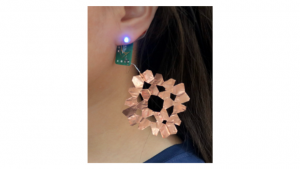Dutch graphic designer, illustrator and animator Rop van Mierlo’s book Wilde Dieren (Wild Animals) is almost child-like, without being childish.
Rather charming, the designer’s watercolour drawings of animals earned him the Best Graphic Design prize at the Dutch Design Awards recently.
Appealing to the child in viewers, the illustrations in Wilde Dieren reveal something about the character of the animals.
We asked Van Mierlo about this work.
How did Wilde Dieren come about?
I graduated three years ago from Design Academy Eindhoven with a book called Bonsai & Poodles, a project about humanity’s urge for control. While making this book, I got fascinated by the idea of creating animals I couldn’t control, wild animals.
You’ve mentioned that you are fascinated by people, how does this relate to your work depicting animals?
I guess, without humans there wouldn’t be a difference between domesticated animals and wild animals. It would be just, wraaaw, pek pek, tweet tweet, roaaar...
What are your thoughts on the role and importance of graphic design and illustration as creative disciplines?
I find it hard to answer this question in general but lets try. For me its important that my work, as well as the work of others, moves me in any kind of way, that it feels honest, it tells a story, shines a fresh light on things or just make me intensely happy. If design includes one or more of those things mentioned I think it will add something positive to our lives.
Can you tell us a little bit about your creative process? Do you follow a particular methodology?
While making the animals I do have a certain way of working that’s becoming the same. I put a lot of effort into finding the right animals. I search the library for pictures, buy second hand photo books and explore the web. I look for postures that I like or that are funny. Once I find images I like (this may take several days), I start drawing those animals in as few lines as possible. When that’s done, I start painting. The hardest thing is to let go and not try to control it anyway. Often I still tend to do it.
With my other work the process is completely different every time. I would love to have a methodology because it gives you some peace of mind if you can follow your own instructions or whatever. But now a lot of times I’m completely lost in making lots of work and searching for that special something without knowing what that is or how to get there.
What has winning at the Dutch Design Awards meant to you?
The most important is the reward on sticking to my beliefs. While making the book there were a lot of times that people told me to take an different route or just moments that I doubted the strength of the book myself. But I hung on. After the award ceremony I spoke with a lot of the people from the international jury and they all really felt the effort that went into making the book.
How would you ideally like people to interpret your work? Is it for children or adults, or both?
I find it interesting to see how everybody sees my work in its own way. Of course children see my work completely differently than adults do but it is even more fun that the book works well for both. I think the way people see the book now, "is it a children’s book or is it an art book?", is ideal for me.
















